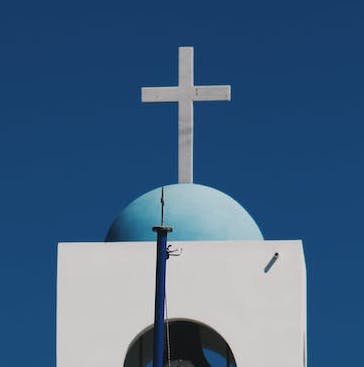In the lush green landscapes of ancient Scotland and Ireland, amidst the echoes of history and the whispers of legends, the powerful and haunting melodies of Gaelic War Chants resonate, telling tales of bravery, honor, and the unyielding spirit of the Celtic people. These chants, more than mere sequences of notes and words, are the heartbeat of a rich cultural heritage that has been meticulously preserved through the ages. They represent not just a form of art or a method of warfare, but a profound expression of identity, emotion, and communal solidarity.
This article delves into the enigmatic world of Gaelic War Chants, exploring their historical origins, linguistic beauty, and the pivotal role they played in the fabric of ancient Celtic society. From the rhythmic cadences echoing in the heat of battle to the solemn verses preserving the tales of old, these chants are a testament to the enduring legacy of the Gaelic culture. Join us on this journey through time as we uncover the stories, the significance, and the continuing legacy of these mesmerizing Gaelic War Chants.
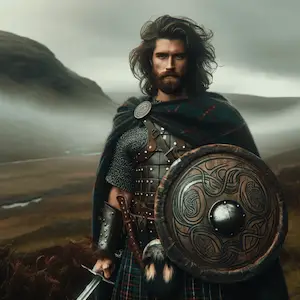
Table of Contents
The Roots of Gaelic War Chants
Immersed deeply in the mists of time, the roots of Gaelic war chants stretch back to the early Celtic tribes of ancient Scotland and Ireland. These chants, much more than mere battle cries, are intricately woven into the very fabric of Gaelic culture, embodying the fierce spirit and profound emotions of a people deeply connected to their land and heritage.
Historically, these war chants emerged as a vital component of the Celtic warrior’s arsenal. However, their purpose extended beyond the battlefield. They served as a potent means of storytelling, a way to preserve the tales of valor, the sagas of heroes, and the lore of the ancient Celts. Passed down orally through generations, each chant carried the weight of history and the wisdom of ancestors, ensuring that the deeds of the past were never forgotten.
The chants were deeply symbolic, often invoking the forces of nature and the pantheon of Celtic deities to empower the warriors and protect them in battle. The rhythm and cadence of the chants were designed to resonate with the natural world, creating a connection between the warrior and the land, believed to imbue them with strength and courage.
It was common for the war chants to be led by a single individual or a group of skilled bards. These bards were not just musicians or poets; they were the custodians of cultural heritage, revered for their wisdom and their deep understanding of the spiritual and historical significance of the chants. The bards wielded immense influence, and their words could inspire warriors to acts of great bravery or instill a sense of solemnity and respect during rituals and ceremonies.
As the Celtic tribes encountered and interacted with neighboring cultures, the war chants evolved, absorbing influences and yet retaining their distinct Celtic essence. The fusion of languages, stories, and musical traditions enriched the chants, making them a vibrant tapestry of the Gaelic people’s history and struggles.
Today, the echoes of these ancient war chants can still be felt, their legacy preserved in the music, the literature, and the hearts of those who strive to keep the Gaelic culture alive. The roots of Gaelic war chants remind us of a time when words and music were not just forms of art but vital threads in the fabric of society, connecting the past with the present, the earthly with the divine, and the individual with the community.
The Language of the Chants
At the heart of Gaelic war chants lies the enchanting and complex Gaelic language, a linguistic tapestry rich in history and nuance. This ancient tongue, with its melodic intonations and rhythmic cadence, serves as the perfect medium for the profound and stirring narratives that the war chants convey.
Gaelic, a language of the Goidelic branch of Celtic spoken historically in Ireland, Scotland, and the Isle of Man, has an inherently poetic nature. Its structure, idioms, and expressions are deeply tied to the natural environment and the cultural heritage of the Celtic people. The language’s capacity to convey complex emotional states and subtle spiritual concepts makes it particularly suited for the intense and evocative nature of the war chants.
The chants often employ vivid imagery and metaphor, drawing from the rich Celtic mythology and the rugged landscapes that the Gaelic people called home. They speak of the wind, the waves, the mountains, and the forests, intertwining these elements with tales of heroism, honor, and the eternal struggle against formidable foes. The language is not merely a tool for communication; it is a vessel for the collective memory and identity of the Gaelic people.
Translating these chants into other languages is a challenging endeavor. The depth of meaning, the cultural context, and the emotional resonance embedded in the original Gaelic often elude direct translation. Scholars and enthusiasts strive to capture not just the literal meaning but also the spirit and the cultural richness inherent in the chants. This process is not just a linguistic exercise but a form of cultural preservation, ensuring that the wisdom and the artistry of the Gaelic war chants are accessible to the wider world.
Understanding the language of the chants offers a gateway into the Gaelic worldview, a perspective where nature, humanity, and the supernatural realm are intimately connected. The chants are more than just words; they are an expression of a people’s soul, a testament to their struggles, their joys, and their indomitable spirit.
For the modern listener or learner, delving into the language of the Gaelic war chants is not just an academic pursuit. It is a journey into a rich cultural tapestry, a chance to connect with the past, and an opportunity to experience the profound emotional and spiritual impact that these ancient words can still evoke today. As the haunting melodies and the powerful words of the chants resonate, they invite us to explore a world where language is not just a means of expression but a bridge to a deeper understanding of our shared humanity.
Famous Gaelic War Chants
Amidst the vast repertoire of Gaelic war chants, certain melodies and verses have transcended time, resonating through the ages as enduring symbols of Celtic bravery, artistry, and spirituality. These famous chants, each with its unique story and character, continue to captivate and inspire, echoing the ancient voices of the Gaelic warriors and bards.
1. “An Dìdean” (The Refuge) “An Dìdean” stands as a towering testament to the resilience and unity of the Celtic tribes. More than a war chant, it is a declaration of protection and solidarity. The verses speak of standing together, shoulder to shoulder, forming an unbreakable human fortress against adversity. The chant’s rhythm is both a comfort and a call to arms, embodying the fierce determination and the profound sense of belonging that defined the Celtic warriors.
2. “Cath na Briosgaid” (The Biscuit Battle) With a title that belies the intensity of its content, “Cath na Briosgaid” narrates an actual historical conflict over resources, symbolized here by ‘biscuits.’ The chant is a blend of irony and valor, a unique mix that characterizes many Gaelic tales. It’s not just a recount of battle but a nuanced story of survival, cunning, and the unyielding spirit of the Celtic people. The melody is both vigorous and haunting, a reminder of the hardships faced and the victories won.
3. “Óró Sé do Bheatha Bhaile” Originally a song of welcome, this chant transformed into a rousing war cry during the Jacobite risings. The version most known for its martial spirit was revived and adapted by Patrick Pearse, an instrumental figure of the Irish independence movement. It epitomizes the call to arms, a rallying cry for freedom and resistance against oppression. The chant is a fusion of hope, defiance, and a profound longing for peace and homecoming.
4. “A Ghleanna” (The Glen) “A Ghleanna” is a poignant ode to the land that the Celtic warriors called home. It’s a chant where the love for the glens, the mountains, and the rivers of the Celtic lands is palpable. The verses speak of the deep connection to nature, the spiritual bond that gave the warriors their strength and resolve. The chant is both a battle cry and a lament, a complex expression of the pain of leaving home to fight and the unbreakable tie to the land that sustains the spirit in the darkest of times.
5. “Dùnadh” (The Closing) “Dùnadh,” often chanted at the end of a gathering or battle, symbolizes the closure of one chapter and the anticipation of another. It’s a powerful chant that encapsulates the resilience of the Gaelic warriors. The words serve as a benediction, a collective wish for safety and strength until the clans meet again. The chant’s solemn melody resonates with the promise of reunion, weaving a bond between those who part and those who stay.
6. “Laoi na Seilge” (The Hunt Song) Though primarily associated with the pursuit of game in the lush highlands, “Laoi na Seilge” doubles as a metaphorical war chant. It mimics the strategy, the stealth, and the burst of energy that characterize both a hunt and a battle. The rhythm is gripping, capturing the ebb and flow of adrenaline, the quiet moments of waiting, and the explosive action of the chase. This chant celebrates the skill, the camaraderie, and the intimate connection to the land that defined the Celtic warriors.
7. “Ròs Mhic an Fhùcadair” (The Rose of the Hunter’s Son) This chant is a tale of love and valor, weaving the personal with the communal. “Ròs Mhic an Fhùcadair” tells the story of a warrior set to leave for battle, and the love he leaves behind. It’s a poignant reminder of the personal sacrifices made in times of conflict. The chant is both a love song and a war cry, a complex narrative that highlights the intertwining of joy and sorrow, love and loss, that punctuates the life of a warrior.
8. “Sliabh Geal gCua na Féile” (The Bright Mountain of Cua) A chant that originates from the southern regions of Ireland, “Sliabh Geal gCua na Féile” is a soulful ode to the homeland. It speaks of the beauty of the mountains and the longing of the exiled to return to their native lands. In times of war, this chant served as a powerful reminder of what the warriors were fighting for: their land, their rights, and their very identity. The melody is both uplifting and melancholic, embodying the hope for return and the sorrow of separation.
9. “Crìoch na h-Uamha” (The End of the Cave) “Crìoch na h-Uamha,” a chant shrouded in mystery and legend, is said to have been sung during covert operations or in preparation for surprise attacks. The ‘cave’ symbolizes both the literal hiding places of the warriors and the metaphorical depth of their strategies and plans. The chant is a testament to the cunning and resourcefulness of the Gaelic clans, their ability to navigate the rugged landscapes, and their profound understanding of the art of war. The tune is enigmatic and haunting, capturing the tension, the anticipation, and the resolve that define the moments before a decisive action.
10. “Ceann na Baintighearna” (The Lady’s Head) “Ceann na Baintighearna” is a chant of defiance and honor. Originating from a tale where a noble lady stands against oppressors, the chant symbolizes the unyielding spirit of the Gaelic people. It’s a battle cry for justice and dignity, with a rhythm that emboldens the heart and stiffens the spine. The chant pays homage to the courage not just of warriors but of all who stand against tyranny.
11. “Fáinne Geal an Lae” (The Dawning of the Day) “Fáinne Geal an Lae” is a chant that captures the hope and renewal that dawn symbolizes, especially after a night of vigilance or battle. The melody and words conjure the image of the first light piercing through the darkness, a metaphor for perseverance and the promise of better times. This chant is a rallying call to embrace the new day, no matter the hardships faced.
12. “Táimse im’ Chodladh” (I am Asleep) Don’t be misled by the title; “Táimse im’ Chodladh” is far from a lullaby. It’s a cleverly coded war chant used for communication among warriors, especially when secrecy was paramount. The chant speaks in metaphors and hidden meanings, masking strategic messages in seemingly innocuous lyrics. The melody is haunting and layered, much like the cryptic messages it carries.
13. “A Bhirlinn Bharrach” (The Barra Birlinn) Celebrating the seafaring prowess of the Gaelic clans, “A Bhirlinn Bharrach” is both a chant of battle and a song of the sea. It tells the tale of a crew ready to face the tumultuous seas, drawing parallels with the tumult of war. The rhythm mimics the rowing of the birlinn (a type of boat), and the words evoke the unity and determination of those aboard, bound by a common purpose.
14. “An Gille Dubh Ciar Dhubh” (The Dark Black-haired Lad) This chant is a tribute to the unsung heroes, the young warriors who stepped bravely into battles. “An Gille Dubh Ciar Dhubh” is both a lament and a celebration of valor, a narrative that intertwines the pride of stepping into one’s destiny with the sorrow of youth lost to war. The tune is poignant and stirring, capturing the bittersweet nature of such sacrifices.
15. “Siúil A Rún” (Walk, My Love) Although known as a love song, “Siúil A Rún” has undertones of a war chant, reflecting the intertwining of personal love and the love for one’s homeland. The chant speaks of parting, of waiting, and of the hope for return. It’s a testament to the endurance of love and loyalty amidst the chaos of war. The melody is both tender and resilient, mirroring the emotions of those who wait, hope, and keep the home fires burning.
Each of these chants, with their evocative melodies and profound narratives, offers a glimpse into the Gaelic soul – a complex tapestry of bravery, sacrifice, resilience, and an unbreakable connection to the land and its traditions.
The Chants in Warfare
In the mist-covered hills and rugged terrains where ancient Celtic warriors once stood, the air was often filled with more than just the sounds of clashing swords and shields. It resonated with the profound and stirring sounds of Gaelic war chants, a crucial element in the tapestry of warfare during those times. These chants were not mere background music; they were a pivotal part of the battle strategy, psychological warfare, and the spiritual armor of the warriors.
Psychological Impact and Morale Boosting The primary purpose of these war chants was to invigorate the warriors, instilling in them a sense of invincibility and shared purpose. The rhythmic cadence and powerful lyrics served to elevate the morale of the fighters, turning individual warriors into a cohesive, unstoppable force. On the battlefield, where fear and uncertainty could turn the tide of war, the chants acted as anchors, reminding the warriors of their strength, their ancestors, and their cause.
Communication and Coordination In the cacophony and chaos of battle, effective communication was crucial. Gaelic war chants often played a role in this aspect, with certain rhythms or verses signaling specific strategies or movements. This pre-arranged, coded language enabled swift and coordinated actions among the warriors, turning their movements into a well-orchestrated dance of offense and defense.
Intimidation of the Enemy The war chants also served as tools of psychological warfare, designed to intimidate the opposing forces. The loud, thunderous chanting, often accompanied by the fearsome sounds of drums and bagpipes, could strike fear into the hearts of enemies. The chants projected confidence and power, sometimes leading adversaries to doubt their own strength or reconsider their resolve.
Spiritual and Cultural Significance Beyond the immediate tactical advantages, Gaelic war chants held profound spiritual significance. They were a bridge between the physical and the spiritual realms, invoking the blessings of the gods and the spirits of ancestors. These chants were not just calls to arms but also prayers for protection, guidance, and victory. They reinforced the cultural identity and values of the Celtic warriors, grounding them in their traditions and beliefs even amidst the chaos of war.
Preservation of Heritage and Identity The battlefield was also a place where culture and heritage were fiercely defended. Each chant was a living narrative, a piece of history carried forth on the winds of war. They were reminders of who the warriors were fighting for, what they were protecting, and the legacy they would leave behind. In times of war, these chants were the heartbeat of the culture, pulsating strongly against the onslaught of time and conflict.
In conclusion, the Gaelic war chants were much more than just components of ancient warfare. They were the embodiment of the Celtic spirit, multifaceted tools that served tactical, psychological, and spiritual purposes. These chants were the voices of the past, echoing through the ages, carrying with them the stories, the wisdom, and the indomitable spirit of the Gaelic people.
FAQ
What role do Gaelic War Chants play in preserving Gaelic language and culture?
Gaelic War Chants play a crucial role in preserving the Gaelic language and culture. They are a living testament to the rich history and traditions of the Gaelic people. By keeping these chants alive, we ensure that the language, stories, and cultural values are passed on to future generations, maintaining a vital link to the past.
See Related Posts

Gregorian Christmas Chants

Love Spell Chants

Best Softball Chants for U12
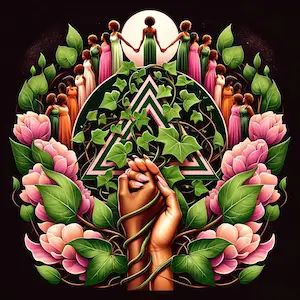
AKA Sorority Chants
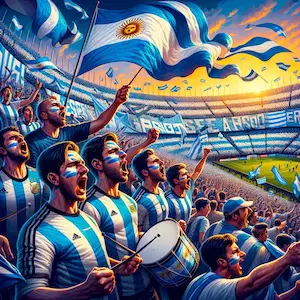
Argentina Football Chants

Short Chants and Cheers
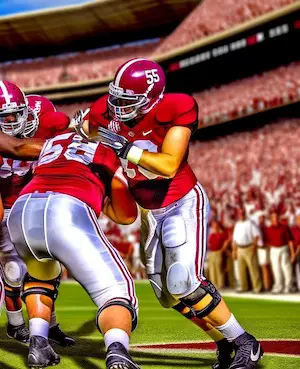
Alabama Football Chants

Everything to Know About African Chants
